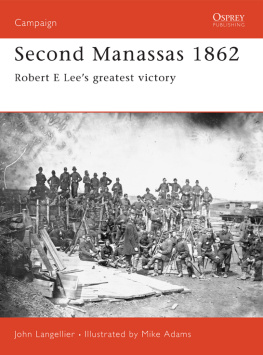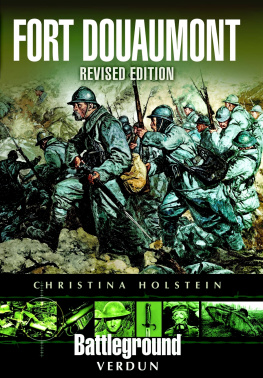This edition is published by PICKLE PARTNERS PUBLISHINGwww.picklepartnerspublishing.com
To join our mailing list for new titles or for issues with our books picklepublishing@gmail.com
Or on Facebook
Text originally published in 1998 under the same title.
Pickle Partners Publishing 2015, all rights reserved. No part of this publication may be reproduced, stored in a retrieval system or transmitted by any means, electrical, mechanical or otherwise without the written permission of the copyright holder.
Publishers Note
Although in most cases we have retained the Authors original spelling and grammar to authentically reproduce the work of the Author and the original intent of such material, some additional notes and clarifications have been added for the modern readers benefit.
We have also made every effort to include all maps and illustrations of the original edition the limitations of formatting do not allow of including larger maps, we will upload as many of these maps as possible.
THE CONFEDERATE COMMAND DURING THE FORT HENRY-FORT DONELSON CAMPAIGN, FEBRUARY 1862
BY
MAJ KENDALL D. GOTT, USA
ABSTRACT
This study investigates the decisive factors that affected the Fort Henry-Fort Donelson campaign in February 1862. The thesis is relevant not only to the study of history, but as a series of lessons for all commanders.
In the final analysis, the ultimate failure of the Confederates during this campaign can be attributed directly to the actions of General Albert Sidney Johnston. He failed to develop an adequate strategy to meet the expected invasion from the North or to insure that each subordinate command in his department was prepared for the onslaught. Johnston also failed to establish a command structure to support his Department. Most damaging of all, Johnston neglected the defenses of the Tennessee and Cumberland rivers, which served as invasion routes through the center of his department
Ironically, one of the worst generals of the Confederacy correctly saw Fort Donelson as the key to stopping Grant and protecting Nashville. Had he been better supported by his superiors and by the officers serving at the fort with him, the Confederates may have won a victory at Fort Donelson and secured the Western Department for several months.
ACKNOWLEDGMENTS
I wish to thank Dr. William G. Robertson for his wise counsel, encyclopedic knowledge, and motivational skills. His candor kept this so-called Civil War buff in line and on target.
I would also like to thank LTC Scott Stephenson for his vivid outlook and patience. He is truly the paradigm military historian and C610 instructor.
CHAPTER 1INTRODUCTION
Fort Donelson was not only a beginning, it was one of the most decisive engagements of the entire war, and out of it came the slow, inexorable progression that led to Appomattox. {1} Bruce Catton, Reflections on the Civil War
The campaign on the Tennessee and Cumberland rivers was the first significant victory for the Union during the American Civil War. After a string of Union defeats, the final victory at Fort Donelson had far-reaching repercussions. General Grants victory was a great morale boost for the North, and an equally devastating one for the South. In one stroke the Confederate defenses in the West were shattered, necessitating the abandonment of most of Tennessee and the state capital of Nashville. Union gunboats were then able to ascend the Cumberland and Tennessee rivers to wreak havoc deep into the Confederate heartland. The disaster at Fort Donelson signaled the beginning of the dismemberment and ultimate defeat of the Confederate States of America.
The Fort Donelson campaign is somewhat forgotten by many historians, yet it deserves careful and deliberate study. It was a small affair when compared to campaigns waged later in the war, and many look upon the campaign as a no-win situation for the South. Out-gunned and surrounded by land and a powerful Union ironclad fleet on the river, how could the Confederates ever have had a chance of resisting Grants onslaught?
Although the odds were seemingly against the Confederates, defeat by Grants army and the vaunted ironclads was never assured. In fact, the Confederates had options that would have prevented the disaster, or at least lessened its impact. This thesis will show that the Confederates lost the campaign due to the ineptitude of department commander Albert Sidney Johnston and the senior commanders at the scene. To support this thesis, I will analyze the nature of the Confederate high command during the months leading up to and during the Fort Donelson campaign. Also, an examination of the situation faced by the generals during the campaign itself will show that the chance for victory was far from over, even after the fort itself was invested by Grants army.
The Fort Donelson campaign is a story of contrasts in command as well as mobilization, logistics, technology, and human endurance. The story embraces the competition for power and control at higher command levels and the utter collapse of Confederate leadership during the campaign. The shattered myth of General Albert Sidney Johnstons invincibility as the preeminent military man of the age stands in stark relief. The sight of impotent Confederate generalship injects a note of comic tragedy into the campaign that is illustrated by generals passing command and responsibility for surrendering their army after throwing away victory. In so many ways, Fort Donelson was a brilliantly missed opportunity for the Confederacy to smash an uncertain Union strategic thrust by an untested Yankee general, Ulysses S. Grant. {2}
The Fort Donelson campaign featured four Confederate general officers who directly influenced events and were responsible for its disastrous conclusion. At the top, General Albert Sidney Johnston commanded the Western Department during the campaign and was directly responsible for the assignment of troops and general officers to the doomed bastion. {3} The senior officer at the fort was Brigadier General John Floyd, a former Governor of Virginia and Secretary of War for the Buchanan administration. Next in line was Gideon Pillow. The second of three commanding brigadier generals at the fort, Pillow had been a major general during the Mexican War, but by many accounts was an inept field commander. Third was Simon Buckner, who had been a junior officer in the Mexican War and had resigned his post as commander of the Kentucky State Guard in favor of a commission in the confederate army. Buckner was arguably the most proficient general at Fort Donelson.
Excluding Johnston, who was not present at Fort Donelson during the battle, the combined experience of the three brigadiers in command far exceeded that of their adversary Ulysses S. Grant. Grant had left the army as a junior officer shortly after the Mexican War and had just recently returned to active duty after years of failing in one private venture after another. At first glance, it would appear logical that the Confederates would have the edge in leadership. After all, they were fighting on their home ground; and in their unified command, the experience of the combined officers should further add to their advantage.







